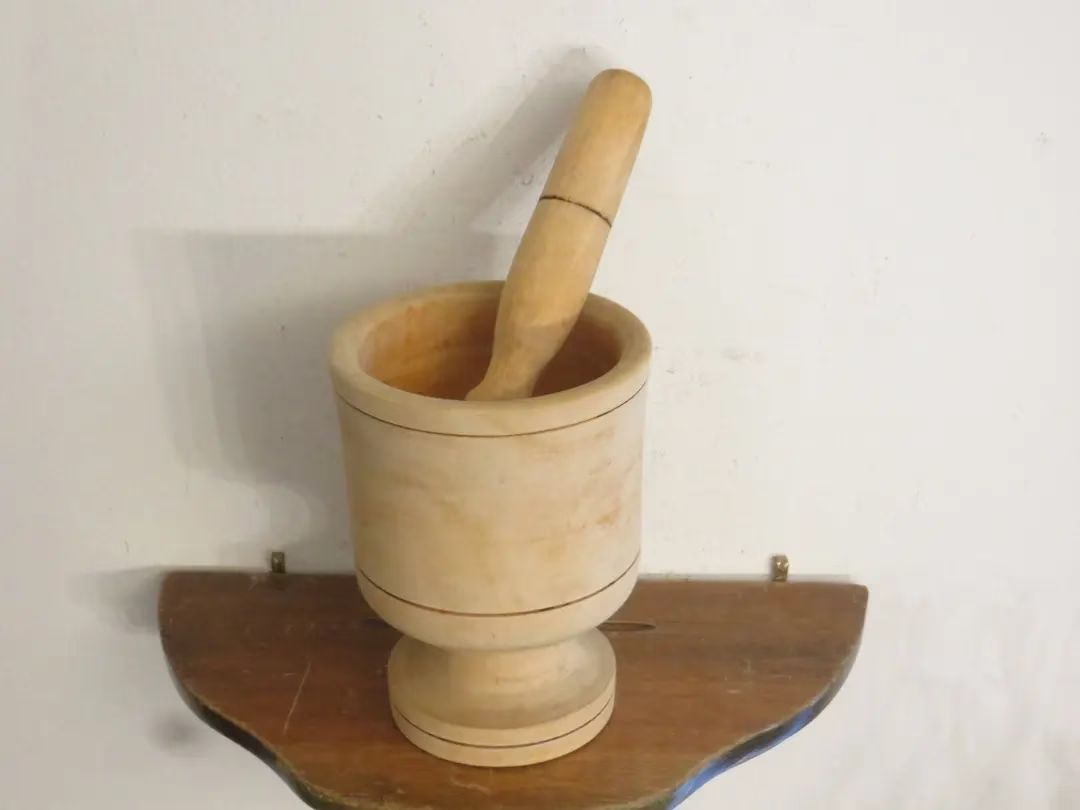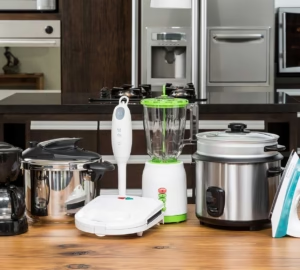In an era of electric blenders and food processors, the humble mortar and pestle (kinu na mchi in Swahili, or kinyozi in some dialects) remains an indispensable tool in countless Kenyan kitchens. Far more than just a relic of the past, this traditional duo offers a unique ability to unlock intense flavors, create authentic textures, and connect you more deeply with the culinary heritage of East Africa. From grinding fresh spices to mashing ingredients for traditional dishes, the mortar and pestle is a testament to timeless cooking wisdom.
At Retail Place, we celebrate the tools that truly empower home cooks. This comprehensive guide explores why the mortar and pestle is an essential kitchen gadget in Kenya, the different types available, its versatile uses, and how to choose and care for one.
The Unmatched Magic of the Mortar and Pestle
While modern appliances chop and pulverize, a mortar and pestle works by crushing and grinding ingredients. This fundamental difference yields superior results for many applications:
- Unleashing Maximum Flavor & Aroma: Electric grinders generate heat, which can dissipate delicate essential oils and aromas. The slower, gentler action of a mortar and pestle bruises ingredients, coaxing out their full spectrum of flavors and fragrances. This is especially true for whole spices, fresh herbs, garlic, and ginger – staples in Kenyan cuisine.
- Achieving Authentic Textures: Whether you need a coarse grind for a rub, a fine powder for spices, or a rustic paste for kachumbari or curry, a mortar and pestle gives you complete control over the texture. This allows for nuances that blenders often miss, resulting in a more authentic taste experience.
- Versatility Beyond Spices: While renowned for spices, the mortar and pestle is incredibly versatile for various tasks, making it a multi-functional tool for different culinary needs.
- Durability & Longevity: Made from robust materials, a good quality mortar and pestle can last for generations, becoming a treasured family heirloom.
- A Connection to Tradition: Using a mortar and pestle is a meditative act that connects you to generations of cooks and traditional culinary practices.
Types of Mortar and Pestle: Choosing Your Perfect Match
Mortars and pestles come in various materials, each with unique properties suited for different tasks. In Kenya, you’ll commonly find:
Stone (Granite, Marble, Soapstone)
- Pros: Extremely durable, heavy (providing stability for vigorous grinding), and often have a rough, unpolished interior that provides excellent friction for breaking down tough ingredients like whole spices, nuts, and fibrous roots like ginger and turmeric. Granite is a top choice for its effectiveness and longevity. Soapstone (like the handcrafted ones from Undugu Fair Trade found in Kenya) offers a beautiful, unique look and is good for softer herbs and pastes.
- Cons: Can be very heavy, require seasoning before first use (especially granite) to remove stone dust, and are generally more expensive.
- Best For: Grinding whole spices, making curry pastes, crushing garlic/ginger, preparing guacamole, or traditional pastes.
Wood
- Pros: Lighter than stone, generally more affordable, and gentle on delicate ingredients like fresh herbs. Traditional wooden kinu are often used for pounding larger quantities of food, like maize or millet for flour.
- Cons: Can absorb odors and stains over time, may not be as efficient for very hard spices, and require handwashing.
- Best For: Pounding grains, mashing soft fruits, light grinding of herbs, and some traditional preparations.
Ceramic/Porcelain
- Pros: Non-porous (doesn’t absorb odors or stains), easy to clean, often aesthetically pleasing. The smoother surface is excellent for creating fine powders and emulsions.
- Cons: Can be fragile and crack if dropped, less effective for very hard ingredients compared to granite.
- Best For: Grinding delicate dried herbs, making pesto or emulsions like mayonnaise, pulverizing pills (for medicinal use).
Stainless Steel
- Pros: Very durable, non-porous, hygienic, and easy to clean.
- Cons: Can be slippery for some ingredients, and the metal can sometimes react with acidic foods, though this is rare with high-quality stainless steel.
- Best For: General-purpose grinding of spices, herbs, and garlic.
Versatile Uses in the Kenyan Kitchen
The mortar and pestle is incredibly versatile. Here are some common and traditional uses:
- Spice Grinding: Freshly grind whole spices like cumin, coriander, black pepper, cardamom, and cloves for curries, stews, and pilau. The difference in aroma and flavor compared to pre-ground spices is remarkable.
- Garlic & Ginger Paste: Create smooth or coarse pastes of garlic and ginger, often combined with chilies, for marinades, sukuma wiki, or mukimo.
- Curry Pastes & Marinades: The ultimate tool for making vibrant, aromatic curry pastes from scratch, blending fresh ingredients like lemongrass, galangal, chilies, and herbs with toasted spices.
- Pesto & Guacamole: Achieve the perfect texture for pestos (where the name “pestle” comes from!) and chunky guacamole.
- Herbal Remedies: Traditionally used for crushing medicinal herbs and roots.
- Kachumbari & Salsas: Mashing tomatoes, onions, and chilies for a rustic kachumbari or other fresh salsas.
- Crushing Nuts & Seeds: For baking, garnishes, or making nut butters.
- Pounding Ugali or Githeri (Large Kinu): In rural settings, larger wooden mortars and pestles are still used for pounding staple foods.
Choosing the Right Mortar and Pestle for You
- Size: Consider how much you’ll be grinding. A 15-20 cm (6-8 inch) diameter mortar is a good all-rounder for most kitchen tasks. Larger ones are for bulk grinding, smaller for single cloves of garlic or a pinch of spices.
- Material: As discussed above, choose based on your primary use. Granite is excellent for heavy-duty spice grinding and pastes.
- Weight: A heavier mortar (especially stone) provides stability during grinding, so it won’t slide around.
- Pestle Design: Look for a pestle that fits comfortably in your hand. The grinding end should have enough surface area and a good texture (e.g., rough granite) for efficient crushing.
- Unfinished Interior (for Stone): Many effective stone mortars have a rough, unpolished interior to enhance friction.
Care and Maintenance for Your Mortar and Pestle
Proper care ensures longevity and prevents flavor transfer.
Seasoning (for Stone Mortars)
Before first use, especially for granite, “season” it. Grind a handful of uncooked white rice (add a little water if needed) until it turns to powder. Discard and repeat until the rice remains white, indicating all stone dust is removed. Then, grind garlic cloves with salt and peppercorns, coat the interior, let it sit, then wash.
Cleaning
- Immediately After Use: Rinse with warm water to prevent staining and odors.
- Mild Soap Only: Use a mild, unscented dish soap and a soft brush or sponge. Strong detergents or scented soaps can be absorbed by porous materials and affect future flavors.
- Rinse Thoroughly: Ensure all soap residue is removed.
- Dry Completely: Air dry or wipe with a clean cloth. Do not soak wooden or porous stone mortars for extended periods.
Storage
Store in a dry place. Some prefer to leave their beautiful stone mortars on the counter as a decorative and accessible piece.
The mortar and pestle is more than just a kitchen tool; it’s an experience. It invites you to engage with your ingredients on a deeper level, transforming simple spices into aromatic masterpieces and fresh produce into vibrant pastes. For any discerning home cook in Kenya, investing in a good quality mortar and pestle is a step towards richer flavors and a more authentic culinary journey.
You can find a wide selection of mortar and pestles at major supermarkets like Carrefour and Naivas, online marketplaces like Jumia Kenya, Electronics Place and Avechi, and specialty kitchenware stores across Nairobi and other towns. For traditional wooden or handcrafted stone versions, explore local markets.









